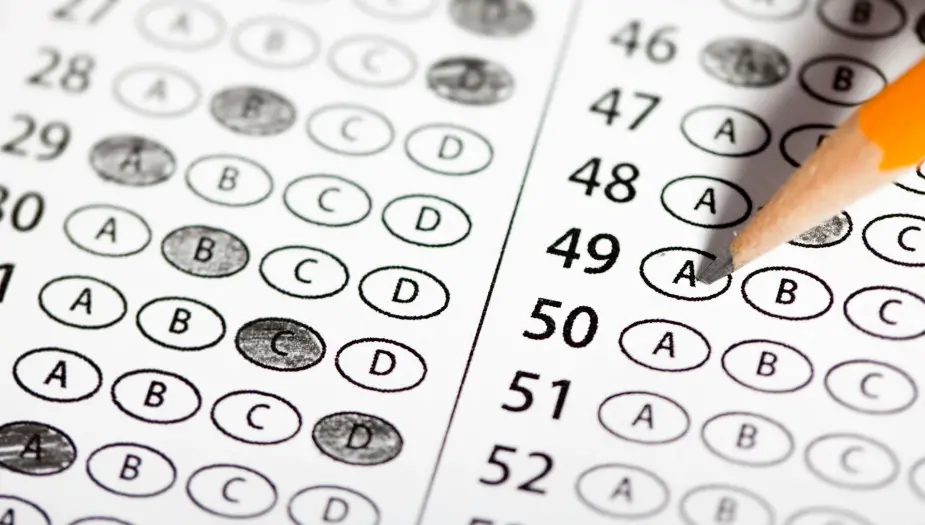Are you an INTJ, ENFP, or somewhere in-between? If these acronyms have you scratching your head, fear not. Welcome to the intriguing realm of personality tests. Our guide today?

The most common personality test – the Myers-Briggs Type Indicator (MBTI). So fasten your seatbelts, dear readers, as we journey into the heart of the MBTI and uncover its captivating secrets.
Decoding Personality Tests: Not Just a Buzzword
Personality tests, my dear readers, aren’t just a nifty party trick or a buzzword tossed around in casual conversations. They’re serious business, with a hefty dose of science backing them up.
- The Rise and Relevance of Personality Tests: From job interviews to relationship compatibility, personality tests have infiltrated every corner of our lives. They offer insights into our behavior, motivations, and interactions, helping us understand ourselves and others better.
- The Science Behind Personality Assessment: Rooted in psychology, these tests use a range of theories and models to map out our personalities. For instance, trait theory focuses on specific characteristics, while type theory categorizes people into distinct types.
The Birth of Myers-Briggs: A Historical Glimpse
Now, let’s turn back the clock and travel to the birthplace of the most common personality test – the Myers-Briggs Type Indicator.
- The Inception of the Myers-Briggs Type Indicator: Our story begins in the early 20th century with Katharine Cook Briggs and her daughter, Isabel Briggs Myers. Inspired by Carl Jung’s theories, they set out to create a tool that would help individuals understand their personality types.
- Katharine Cook Briggs and Isabel Briggs Myers: The Minds Behind the Magic: This mother-daughter duo spent years refining their ideas, finally giving birth to the MBTI in the 1940s. The goal? To make Jung’s complex theories accessible to everyone.
Unraveling the MBTI: 16 Personalities, One Test

And now, the moment you’ve been waiting for – the grand reveal of the 16 personality types of the MBTI!
- An In-depth Look at the MBTI’s 16 Personality Types: From the enthusiastic ENFP to the logical INTJ, the MBTI offers a colorful spectrum of 16 distinct personality types. Each type is a unique combination of four dichotomies, providing a nuanced understanding of an individual’s personality.
- The Four Dichotomies: Extraversion vs Introversion, Sensing vs Intuition, Thinking vs Feeling, Judging vs Perceiving: These dichotomies represent preferences in how people perceive the world and make decisions. Are you more focused on the outer world or your inner world? Do you prefer concrete information or abstract concepts? Do you make decisions based on logic or values? Do you prefer a structured lifestyle or a flexible one?
Intriguing, isn’t it? But hold onto your seats, folks, because we’re just getting started! Stay tuned as we explore the practical applications and controversies surrounding the MBTI in the sections to come.
Myers-Briggs in Action: Where is it Used?
The Myers-Briggs Type Indicator isn’t just an intellectual curiosity. It’s a practical tool that’s used in various settings.
- The Role of the MBTI in Workplaces: From team building to leadership development, the MBTI is a popular tool in corporate environments. It helps individuals understand their work styles and how they interact with colleagues, fostering better communication and collaboration.
- MBTI’s Influence on Personal Development and Relationships: On a personal level, the MBTI can provide valuable insights into one’s strengths, weaknesses, and potential growth areas. It can also shed light on relationship dynamics, helping individuals navigate their interpersonal connections more effectively.
Critiques and Controversies: Is Myers-Briggs All it’s Cracked Up to Be?
Despite its popularity, the MBTI has had its fair share of criticism. Let’s take a closer look.
- Analyzing the Criticisms of the MBTI: Critics argue that the test lacks reliability (people often get different results when retaking the test) and validity (it may not measure what it claims to measure). Some also question its binary nature, suggesting that it oversimplifies the complexities of human personality.
- The Validity and Reliability Debate: While the creators of the MBTI stand by its validity and reliability, some psychologists argue that other models, like the Big Five, offer a more accurate and comprehensive view of personality.
Beyond Myers-Briggs: Other Popular Personality Tests

While the MBTI might be the most common personality test, it’s far from the only one. Here are a couple of other popular tests that you might find interesting.
- The Big Five Personality Test: An Overview: Also known as the Five-Factor Model, this test measures five broad dimensions of personality: Openness, Conscientiousness, Extraversion, Agreeableness, and Neuroticism.
- The Enneagram: A Quick Look: The Enneagram is another popular personality system. It identifies nine distinct types, each representing a worldview and archetype that resonates with the way people think, feel, and act.
The Last Word on the Most Common Personality Test
So there you have it, folks. A whirlwind tour through the world of the most common personality test – the Myers-Briggs Type Indicator. We’ve explored its origins, delved into its 16 personality types, examined its applications, and even scrutinized its criticisms.
But remember, while tools like the MBTI can provide fascinating insights, they’re just one piece of the puzzle. Each of us is a complex tapestry of traits, experiences, and influences that can’t be fully captured by a single test. So here’s to embracing our multifaceted personalities in all their glorious complexity!
